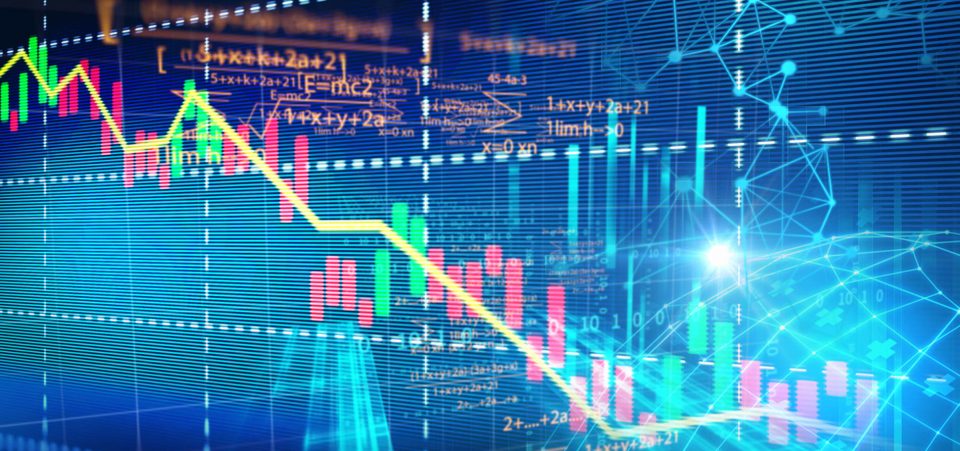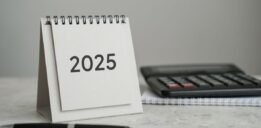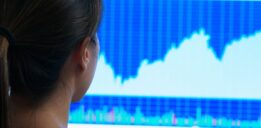Overvalued Stocks Could Trigger the Market Crash of 2017
Wall Street has reached new heights, breaking all records. The market bulls are telling us that the reason for the Dow Jones topping 21,000 points is because of the enthusiasm for U.S. President Donald Trump. His policies, they say, could push that market to even loftier heights, delivering even more robust returns. But, the reality is altogether different. Investors should prepare for an upcoming stock market crash in 2017.
The American economy is not performing all that well. After the especially disappointing 0.7% gross domestic product (GDP) rate from March, the April figure of 1.7% was a relief. But it still suggests Trump’s target of three-percent annual growth remains distant. The unemployment rate has not changed significantly. Meanwhile, instead of an overall climate conducive to growth, Americans are having to get used to unprecedented instability. Indeed, the stock market is overvalued in 2017 based on a combination of risk factors.
Sooner or later, the market sentiment will become more cautious. Investors will start to pull back, fearing a greater bubble risk. But by then, it will likely be too late. It’s always too late. Nobody wants to call out a bubble for fear of making it burst. That’s what happened in 2000 with the tech bubble, and it’s also what happened in 2008. In fact, it’s what happened with the Wall Street Crash of 1929, with the subprime mortgage crisis, and the housing bubble.
Just a Little Bit of History Repeating
Does history repeat itself? It doesn’t on the details, but when lessons aren’t learned, history bites back with a vengeance. Famed market guru Marc Faber—aka Dr. Doom—has warned investors about the dangers that continue to encroach on the markets in general and the United States in particular. (Source: “Marc Faber—aka Dr. Doom—warns that in financial markets ‘there is a bubble in everything’,” MarketWatch, June 1, 2017.)
Faber warns that a tech bubble burst in 2017 is coming. He warns that Tesla Inc (NASDAQ:TSLA), Amazon.com, Inc. (NASDAQ:AMZN), and Netflix, Inc. (NASDAQ:NFLX) will lose 10% “someday.” That “someday” is fast approaching because of a conflation of risks. (Source: Ibid.)
But Faber’s concerns extend to Wall Street in general. Investors seem to have ignored that the U.S. market has inflated a gigantic bubble that involves all assets.
Faber gets attention because he’s famous. The market risk has reached such a steep precipice that most investors should see it clearly. Instead, at present, few people are aware of the situation because, as is often the case, people’s risk perception lessens ahead of a stock market that has been growing steadily for several years. Now, nobody wants to miss out on the markets breaking historic records day after day. But they should also beware the higher risk of a stock market crash.
Yet the risks are lurking and they stem from the wider economic picture. The economy’s fundamentals are like a car’s dashboard gauges. The water temperature needle is all the way up and the head gasket could blow at any moment. That’s an expensive job, if it can be repaired. In fact, when this bubble explodes, investors may even lose more than just Faber’s 10%. Panic will set in and set off a contagious negative sentiment that could last for days.
Faber has pointed out the tech bubble, which could lose 10% in a single session. But that could trigger an avalanche sell-off, affecting just about all stocks. Wall Street has benefited from several factors pushing values higher. The Trump factor may be the last and decisive one: the veritable needle that bursts the bubble.
The ratio of share prices and earnings, known as the Shiller P/E Ratio, named after economist Robert Shiller, has reached alarming levels. If you take the S&P index, it turns out that the ratio today is about 28. Compare that to the long-term average of 16. Curiously, it’s a level eerily similar to what was seen in the 1929 stock market crash and, of course, the 2008 crash.
Before 2000, when the tech bubble burst, it was said that digital was changing the world and that those companies deserved their huge P/E ratio. It was true that the dot-com revolution would change the world. It has.
But not all dot-com companies were the same, and the bubble burst. The hysteria over the Y2K bug, as it was known, may have contributed by showing that the industry was also capable of generating too much hype. In 2008, the world thought it had found the formula for growth without inflation and without shock. But the subprime mortgage crisis opened everybody’s eyes back to reality.
Irrational Growth and the Market of 2017
Are we in a period of irrational growth and, above all, do we have to wait for the blast of a bubble? You bet. The main problem is that to predict the exact moment a bubble is going to burst is impossible. In retrospect, the ultimate cause becomes clearer and some analysts classify these as “black swans.” These are so named after the fact that until Australia was discovered, nobody knew of the existence of black swans. That could come in the form of a Trump impeachment or another unexpected negative event, which will leverage the fact that Wall Street is very expensive today.
Briefly, the Trump factor refers to that combination of favorable expectations, a literal euphoria, related to the U.S. president’s infrastructure investment plans (over $1.0 trillion). Then there is the expected repatriation of American companies’ profits from abroad. And, of course, the real biggie: the simplified and substantial tax cuts for corporations and the rich.
Unless you have chosen to turn off the TV news, Trump’s proposals are ambitious and radical. They have scared even the most “free market” proponents in Congress, because the tax cut proposals did not come with any suggestions for to how to pay for them. The tax cuts would also risk boosting the deficit and public debt, which are already flying off into the stratosphere.
But that’s just part of the problem. The main reason why the tax cuts and so many others of Trump’s plans risk falling flat in Congress is political. The technical obstacles to Trump’s plans are combined with the uncertainties of the so-called “Russiagate” scandal: The investigation into alleged and unclear contacts between Trump’s campaign staff and Russian officials. Many Democrats blame this collusion—unproven as yet—for Hillary Clinton losing the presidential elections in November 2016.
The Russiagate investigation is building momentum and has called into question Trump’s son-in-law, Jared Kushner. It has even called into question British politician Nigel Farage. In other words, from quaint distraction and CNN mantra, the investigation has built such strength that it could prompt Trump to resign—unlikely, given his personality—or leave the White House in an impeachment scandal, which will make Americans forget Watergate.
Even if it doesn’t end like Watergate, the Russiagate investigation has become a stumbling block. It will undoubtedly slow down Trump’s work schedule. Instead of “Making America Great Again,” Trump and the various senators, representatives, commissions, and FBI investigator will make Trump’s lawyers’ bank accounts great—‘yuge—again.
Thus, the risk of a stock bubble bursting extends well beyond the factors related to the market. The tech sector has been the one to rise beyond all reason lately, but unlike 2000, this time it won’t be just a tech bubble to burst. All investors will become victims of the speculation and the political games in Washington.
Weak Fundamentals
In addition, consumption has been weak for this economic recovery phase, while wage increases have not changed their downward trend. All the while, stock prices have miraculously gone up, buoyed by untimely optimism. In this context, it surprises me that so many analysts still feel that the argument of a bullish market is valid!
The volatility index itself is alarming for its optimism, or perhaps, for its deception, which keeps investors in the dark about an imminent market crash.
To avoid the pitfalls and dangers of the markets, there is always gold. The yield from Treasuries and other alternative investments to those in the equity markets are too weak. That may explain why Wall Street has been beating so many records lately. But, if Fed Chair Janet Yellen does decide to raise interest rates, there is the risk that many investors might seek the safety of U.S. government bonds, whose prospects become more appetizing in the face of such overall risk of a stock market crash.
Still, although everything on Wall Street might be at risk, some sectors do have the antibodies to resist. Stock prices are, on average, higher. The share values were already high before Donald Trump was elected. They have moved up a further $3.0 trillion because, apart from the tech stocks (which have generated a tech bubble) some sectors like energy, pharmaceutical, digital, and defense have also risen to stratospheric levels.
Of these, the defense sector is the one that might best weather the coming political storm. Instead of shrinking, the list of defense risks has grown. There have been fresh and horrific new attacks in Afghanistan, a growing Islamist ISIS threat in South East Asia (particularly the Philippines), which is spreading, and the potential expansion of the Syria war, involving a more direct U.S. presence. In other words, the Pentagon has plenty of motivations to expect a bigger budget.
If that weren’t enough, Saudi Arabia has placed an order for at least $100.0 billion in defense equipment. The shopping list could expand to $300.0 billion over the next decade. The Saudis are clearly concerned about the fact that their region, the Middle East, will experience more, and not less, war.








